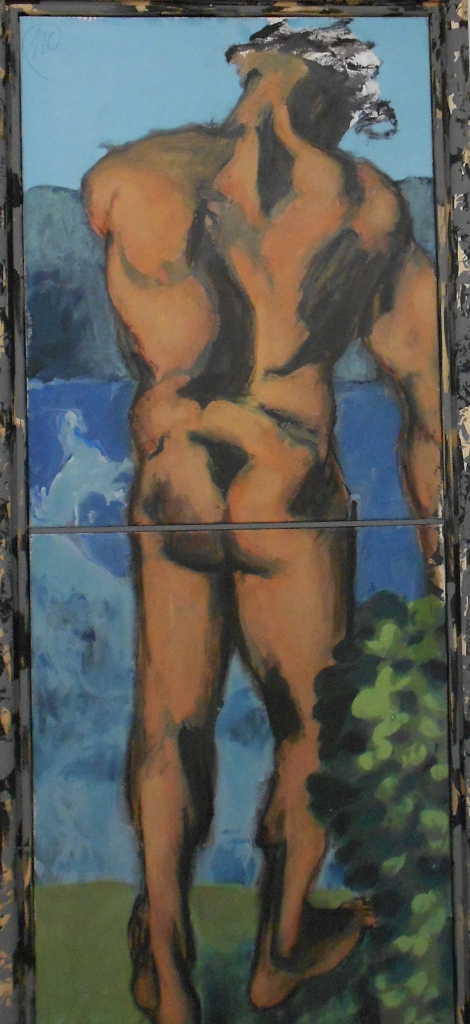 |
| Omar with the flowers he finds on his walk through Homs |
I have not been able to stop thinking about
Silvered Water, Syria Self-Portrait. The
film was reviewed and received maximum stars in the cultural columns of all the
major press here in France. It’s when I see a film like this in a commercial
cinema on Friday night that I am happy to live in Paris. I can’t even begin to
imagine the film being screened, let alone applauded by the mainstream press in
the UK the US, or any other economy-based country. Film festivals yes,
commercial release, I doubt it. What is effectively an experimental film that
shows the unspeakable horrors committed by government forces during the Syrian
Civil War in 2012 should, however, be compulsory viewing.
Ossama Mohammed,
living in exile in Paris (no doubt the reason for the film’s feature at Cannes
and commercial distribution in France) has put together a feature length film
compiled of fragments posted on the internet, amateur footage made with cell
phones, apparently by 1001 Syrians. Prominent among the fragments is the
footage of Wiam Simav Bedirxan who, through the course of the film, and
presumably the course of Ossama Mohammed’s making of the film, becomes its
co-director. Bedirxan is a school teacher in Homs and to capture atrocity and
the ravage of the war at first hand, all she needs to do is go to school for
the day. It is everywhere. The bombed out rubble through which she and the
children walk aside, the sights are of a hell on earth. Animals with their
faces blown out, children lying splayed on the street, blood covering what
little skin is left for the camera to see.
As if these images
were not horrifying enough, perhaps the most disquieting are those that open
the film and are repeated throughout: a baby being dismembered, a naked man
being beaten, an unidentifiable object penetrating his anus. This and other
fragments of footage must have been shot by dissenting soldiers from within President
Bashar al-Assad’s army. How else could a camera have witnessed these acts of torture? As an anonymous voice is heard imploring an
equally unknown and otherwise invisible enemy: why would they want to kill
their own people? That’s why what Silvered
Water shows is as, if not more, devastating than the horrific images that
came out of Bosnia 20 years ago. The Syrian civil war was the army of a
dictatorship against its own people. There's no ethnic cleansing here.
 |
What makes the footage
and the film experimental is that everything is seen through the eye of a
hidden camera. It has to be. Mohammed is haunted by the death of a young man who
stole his camera, a death we see in full. As Mohammed says on the narration,
for the Syrian government, a camera is equivalent to a gun. This is perhaps the
only, and most convincing example of Paul Virilio’s otherwise all too easy
equation. When a camera has the power to show the world what the government is
doing to its people, the camera and anyone behind it must be eradicated,
uncompromisingly disposed of. And for this reason, there is no choice but to
hide the cameras. Even the dissident footage of internal rebellion is grainy,
showing shaky camera movements, constantly broken up images, events and
atrocities never filmed in their entirety. The events are always cut short, if
not by the guns of the unrelenting army, by the inability of the camera to finish
what it had started out to film.
As the film progresses
Bedirxan and her footage become increasingly prominent. She adopts a child, a
young boy, Omar, who though he appears adorable to us, has been deemed a blasphemer by the aggressors. His father
was killed by forces, and he has been left an orphan by this treacherous state
of affairs. As he walks through Homs with Bedirxan he collects odd bits and
pieces that, like any child would, he considers to be treasures. He does not
flinch or even turn around as bombs go off all around him, he knows where the
snipers are hidden, and when it comes time to walk down a street he knows is
littered with snipers, he shows Bedirxan how to pass and leads the way. The
boy must be no more than five or six years old. And all we can think is: this
is his future, this hell on earth in which finding a flower alive, or leaves on
a tree are nothing short of a miracle.
This is an
extraordinarily powerful, if deeply disturbing—visually, emotionally and
intellectually— film. For some years now, the space and logistics of warfare
have changed thanks to people’s access to its representation. Since the Orange
Revolution in the Ukraine in 2004, participants and spectators have become
instrumental in these dramas because of their easy access to the production of
images. The result, as it is witnessed by the many image makers of Silvered Water is the chaos and
slaughter that are the reality of a twenty-first battlefield.

.JPG)

.JPG)









